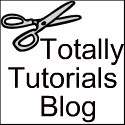In my last article, regarding this subject, I gave an overview of a few different types of combs. I also explained why, I believe, certain combs work better for certain hair densities. In this article I am going to cover brushes. Two specifically, one I recommend using and one I recommend staying away from. Hopefully, by the end of reading both articles you will have a better idea of what you will want to use for your hair care needs, whether it be comb or brush.
The first brush on the list is a Boars head bristle brush (say that 10 times fast), which derived its name from the animal it came hailed from, the boar.
Pros:
- Made out of natural boar’s hair fibers
- Soft bristles are attributed with being useful in moving natural oils down the length of the hair
- Much more gentle on the hair than their synthetic counterparts.
- Efficient at smoothing fly-aways
Cons:
- Bristles are densely packed together
- Does not easily remove tangles
- Can cause undo stress and damage to the hair strand resulting in breakage.
- Should not be used on wet hair
- Causes frizzing and/or relaxing /straightening of curls
This brush does wonders when it comes to straightening the hair, or when you want a smooth looking style (i.e. a ponytail), but when it come to curls it just doesn’t make the cut. The densely packed bristles do an awesome job of moving natural oils down the hair strand, but when you want your curls to look their best the closeness of the bristles tug away at your beautiful curls leaving them frizzy and awkward looking. Using a boar’s head bristle brush on wet hair is a definite no, no, because that is when the hair is most fragile and you are likely to end up with a lot of split ends. Using it on wet hair also adds a lot of extra bulk and volume to the hair that most people do not like. In the end, this brush is wonderful for straightening only.
The second on the list is a plastic vent brush. This brush must be entirely synthetic and have little plastic balls covering the end of each bristle.
Pros:
- Vents allow for faster drying time when straightening the hair.
- Fewer bristles
- Generously spaced bristles
- Easily detangles dry or wet hair
- Versatile in use
- Turned edges aid in “curling” or bending the hair into desired style
- Fair amount of control when styling
Cons:
- Generously spaced bristles
To be honest, this is my most favoritist tool out of the whole lot. While yes, it does have many advantages that can be utilized during the straightening process, none of those advantages become disadvantages when using it solely for curly hair. It is comfortable to use, works (in my opinion) as well as a pik in detangling hair, shower friendly (i.e. doesn’t get ruined in the shower), can be used if you want to “straighten” your hair, etc… I really do love this tool! To temper myself a little, I will concede that this may not be the best choice for those curlies with fine to medium fine hair, for the same reasons given with the pik. At the end of the day, if I had to choose just one tool to use, I would pick the vent brush every time. The versatility of this tool, for me, makes it irreplaceable.
I hope that after reading both articles you will me able to make the best choice for your hair and your lifestyle. What your final preference will be may be different than mine, but that is ok, so long as you are happy with your results. I should let know now that I only recommend using a comb or a brush to detangle your hair right before your get in the shower. I use my fingers for pretty much everything else. In the end you could decide to just skip the whole comb and brush routine and use what God gave you, your fingers! But whatever you decide make sure it’s what’s right for you.







